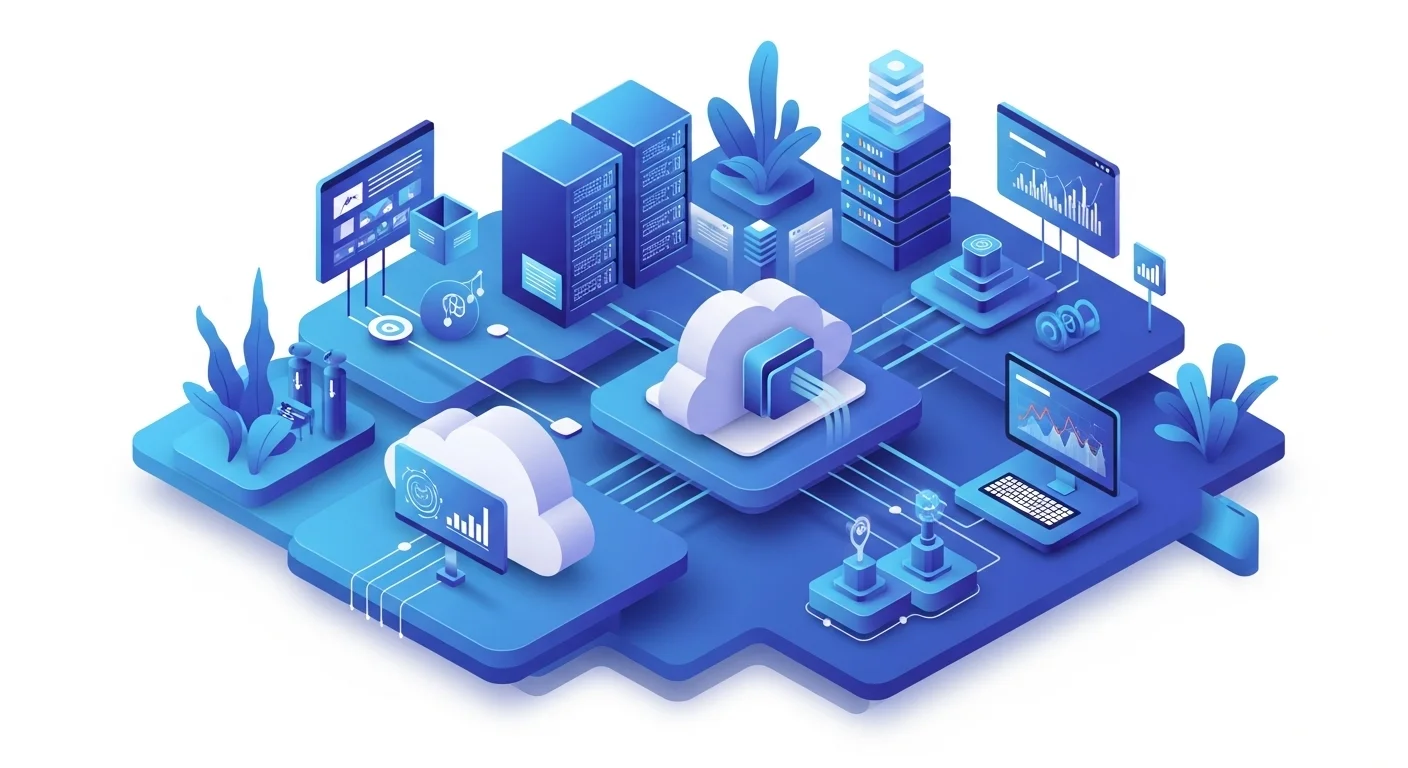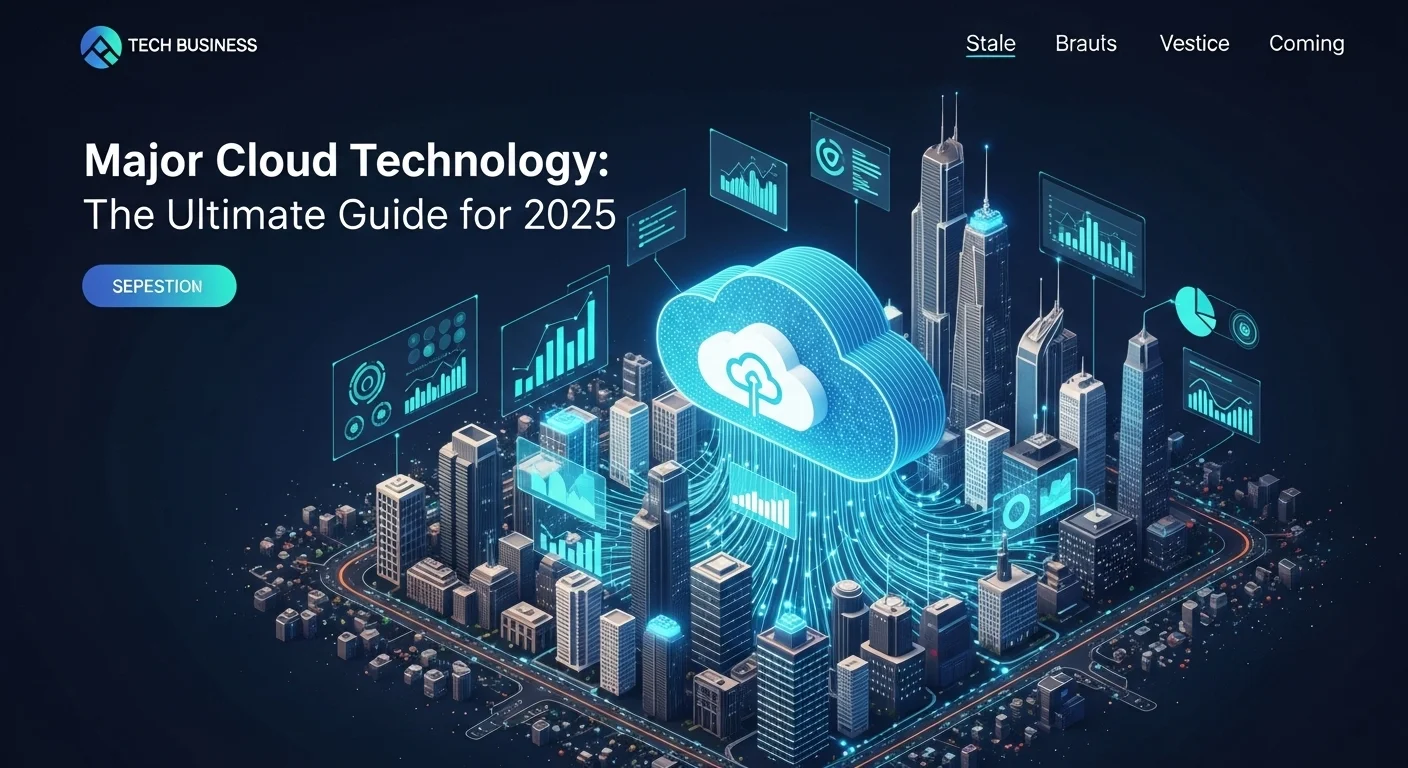Server Solutions Explained: A Practical Guide from On-Premise to the Cloud

Executive Summary
Back in the day, if you wanted to launch something digital, you needed a server room—a cold, noisy space filled with blinking lights and a hefty price tag. I remember those days well. Today, the world of server solutions is vastly different. It’s a dynamic mix of physical hardware in your office and powerful, scalable resources in the cloud. This guide is my attempt to demystify it all for you. We'll explore what servers *really* are, why moving to the cloud has been a game-changer for so many businesses, and most importantly, how to protect your digital assets with smart backup strategies. Whether you're a business owner, an aspiring developer, or just tech-curious, you'll walk away with a clear understanding of how to choose the right setup for your needs.
Table of Contents
Table of Contents
- What Are Server Solutions, Really? And Why They're the Heartbeat of Tech
- The Great Migration: Moving to the Cloud
- Protecting Your Digital Gold: The Crucial Role of Backups
What Are Server Solutions, Really? And Why They're the Heartbeat of Tech
Let's cut through the jargon. At its heart, a server is just a powerful computer whose job is to provide services—like hosting a website, storing files, or running an application—to other computers (your laptop or phone, for example). A 'server solution' is simply the complete plan and setup of these servers to get a specific job done. For years, I've seen them as the unsung heroes of the digital world. They are the engines running 24/7 in the background, making everything from your favorite streaming service to your company's entire operation possible. Without a solid server strategy, the internet as we know it would simply grind to a halt.
The journey of server technology has been incredible to watch. In the early days, the only option was an 'on-premises' server. This meant businesses had to buy, house, and maintain their own bulky hardware. I've spent countless hours in freezing server rooms, dealing with hardware failures at 3 AM. While you had total control, it was incredibly expensive, required a dedicated IT team, and scaling up was a slow, painful process. This old-school approach worked, but it couldn't keep up with the speed and data demands of the modern world. It was clear we needed something more flexible, which set the stage for the cloud.
The Great Migration: Moving to the Cloud
The arrival of cloud computing completely changed the game. Instead of buying and managing your own servers, you could now 'rent' computing power from providers like Amazon Web Services (AWS) or Microsoft Azure. This was a revolution. Suddenly, anyone could access enterprise-level technology. Startups could launch and scale ideas in minutes, paying only for the resources they actually used. It leveled the playing field in a way I'd never seen before. The magic behind this is a technology that lets a single physical server act like many separate virtual servers, making the whole system incredibly efficient and flexible.
This new cloud world gave us different service models, each offering a unique level of convenience:
- Infrastructure as a Service (IaaS): This is like renting the raw land and utilities. The provider gives you the virtual servers, storage, and networking, but you manage the operating system and software. It offers the most control and flexibility in the cloud.
- Platform as a Service (PaaS): This is like renting a fully equipped workshop. The provider manages the underlying infrastructure and operating system, giving you a platform where you can just focus on building and running your applications.
- Software as a Service (SaaS): This is like moving into a fully furnished apartment. You get a complete, ready-to-use application over the internet (think Gmail or Salesforce). You don't have to worry about anything behind the scenes.
Protecting Your Digital Gold: The Crucial Role of Backups
Whether your servers are in your office or in the cloud, your data is your most valuable asset. I've seen businesses crippled by data loss from hardware failure, a security breach, or even a simple human error. A server solution without a backup plan is a disaster waiting to happen. In the past, this meant cumbersome tapes and off-site storage.
Thankfully, the cloud transformed this too. Using the cloud to back up your servers is now the gold standard. It’s an automated, secure, and reliable way to protect your information. Your data is sent to a safe, remote location, protecting it from local disasters like a fire or flood. These cloud-based backup services are designed to scale with you and allow you to restore your data from anywhere, dramatically cutting down your recovery time. It's not just a technical feature; it's a fundamental business survival tool. It ensures you can operate with peace of mind, knowing your digital presence is safe and sound.

Your Complete Server Playbook: On-Premise vs. Cloud vs. Hybrid
Choosing the right server setup is one of the most important tech decisions you'll make. It affects your performance, budget, and ability to grow. Let's break down the main options so you can find the perfect fit. Think of me as your guide, helping you navigate the technical paths and business roads of this landscape, always keeping an eye on the essential safety net of cloud backups.
On-Premise Servers: The Fortress You Build Yourself
Think of an on-premise solution as owning your own house. You buy the land (your office space), build the house (the server hardware), and you're responsible for all the plumbing, electricity, and security.
The Experience:
- Full Control: You have complete, hands-on control. Your IT team can configure everything exactly to your specifications. This is often a must-have for organizations with very specific security or compliance needs.
- Upfront Investment: You have to buy all the hardware, which means a large capital expense. You also have to factor in ongoing costs for power, cooling, and maintenance.
- Performance: For applications that need lightning-fast response times, having the server on your local network can be a real advantage.
- The Catch: You're responsible for everything. When hardware fails, it's on you to fix it. Scaling up is slow and expensive, and disaster recovery is a complex project you have to design and manage entirely on your own.
Who is it for?
I typically see this model in large, established companies with big IT budgets or in industries with strict regulations about where data can be stored.
Cloud Servers: Renting a High-Tech, Flexible Workspace
Now, imagine renting a state-of-the-art, flexible office space instead of buying a building. That's the cloud. You get access to world-class infrastructure and pay as you go, scaling up or down as your team grows or shrinks. This is the essence of modern server solutions.
The Experience:
- Agility is King: The biggest win here is speed. You can launch a new server in minutes. This allows businesses to experiment and innovate at a pace that was once unimaginable.
- Pay-as-you-go: Instead of a massive upfront cost, your server expenses become a predictable operational cost. This is a game-changer for startups and small businesses.
- Effortless Scale: Expecting a huge surge in website traffic for a sale? The cloud can automatically add more resources to handle the load and then scale back down when things get quiet, so you only pay for what you need.
- The Catch: You're reliant on your internet connection, and you need to watch your monthly bills to avoid 'cost-creep.' Good security practices are essential to protect your rented space.
Who is it for?
Honestly, almost everyone these days. From solo developers to massive global corporations, the flexibility and power of the cloud offer compelling advantages.
Hybrid & Multi-Cloud: The Best of Both Worlds Strategy
For many, the choice isn't black and white. A hybrid approach is like owning your main house but renting a flexible workshop for specific projects. You can keep your most sensitive data on your private, on-premise servers while using the public cloud's power for development, analytics, or handling traffic spikes. Another popular strategy is 'multi-cloud,' which means using services from more than one cloud provider (like AWS and Google Cloud) to avoid putting all your eggs in one basket and to pick the best tool for each specific job. This offers ultimate flexibility but requires careful management to keep everything working together smoothly.
The One Thing You Can't Ignore: Cloud Backups
I can't stress this enough: no matter which path you choose—on-premise, cloud, or hybrid—a solid backup plan is not optional. Data loss can kill a business. Using a cloud-based backup service is the modern way to handle this. It automates the process of saving copies of your critical data to a secure, remote location.
Why it's essential:
- Set It and Forget It: Automated backups run like clockwork, removing the risk of human error.
- Fort Knox Security: Your data is encrypted and protected from local disasters.
- Get Back Up Fast: If the worst happens, you can restore your data quickly and minimize downtime.
Ultimately, the move from on-premise hardware to dynamic cloud solutions gives businesses an incredible toolkit. The right choice depends on your needs for control, cost, and agility. But the universal truth is that protecting your data with a reliable cloud backup solution is the foundation of a resilient, future-proof business.

Pro Tips for Managing Your Servers Like an Expert
Over my career, I've learned that choosing the right server platform is only half the battle. The real magic comes from how you manage it day-to-day. A well-run server environment can be a massive strategic advantage. Here are my go-to tips for improving performance, security, and costs, with a focus on smart cloud strategies and essential backups.
1. Think Like a Security Guard: Lock It Down First
In today's world, you have to assume you're a target. I've seen too many businesses treat security as an afterthought and pay the price. A proactive, layered approach is the only way to go.
My personal checklist:
- Least Privilege Rule: Give every user and application the absolute minimum permissions they need to do their job. Nothing more. Review these permissions regularly.
- Patch, Patch, Patch: Keep your operating systems and software updated. Unpatched vulnerabilities are like leaving your front door unlocked. Use automated tools to find and fix them.
- Build Digital Walls: Configure your firewalls to only allow necessary traffic. Isolate different parts of your network from each other. Think of it as creating secure rooms within your building.
- Encrypt Everything: Make your data unreadable to unauthorized eyes. Encrypt it when it's stored on a disk (at rest) and when it's traveling over the network (in transit). Cloud providers make this incredibly easy to do.
- Watchful Monitoring: You can't stop a threat you can't see. Set up detailed logging and monitoring to detect unusual activity early.
2. Squeeze Out Every Drop of Performance
A slow website or app is a silent business killer. Users have no patience for lag. Continuously tuning your servers for speed is critical for a great user experience.
Strategies that work:
- Right-Size, Don't Supersize: It’s tempting to buy a massive server 'just in case,' but it's often a waste of money. Start with what you need and monitor your usage. The beauty of the cloud is that you can easily resize your server with a few clicks.
- Embrace Auto-Scaling: This is one of my favorite cloud features. You can set rules to automatically add more servers when traffic is high and remove them when it's quiet. This gives you performance when you need it and saves you money when you don't.
- Use a Content Delivery Network (CDN): A CDN is a network of servers around the globe that stores copies of your images and files. It delivers them to users from the server closest to them, making your site load much faster.
- Balance the Load: A load balancer acts like a traffic cop, distributing incoming requests across multiple servers. This prevents any one server from getting overwhelmed and improves reliability.
3. Master Your Budget and Avoid Bill Shock
The cloud's pay-as-you-go model is amazing, but it can lead to surprise bills if you're not careful. I've seen it happen. Good governance is key to keeping costs under control.
How to stay on budget:
- Tag Everything: Apply 'tags' or labels to all your cloud resources (e.g., by project or department). This is the only way to know exactly where your money is going.
- Set Up Alerts: All major cloud providers let you set budgets and receive alerts when you're about to exceed them. Use them! It’s your early warning system.
- Hunt for 'Zombies': Shut down resources that aren't being used. Development and test servers left running overnight are a huge and common source of wasted money.
- Commit and Save: If you know you'll need a server for a year or more, you can commit to a 'Reserved Instance' or 'Savings Plan.' In exchange, you can get a massive discount—often over 50%.
4. Plan for the Worst, Operate with Confidence (Disaster Recovery)
Things will go wrong. Hardware fails. People make mistakes. A resilient business isn't one where nothing breaks, but one that can recover quickly. A Disaster Recovery (DR) plan is your insurance policy.
Building a modern DR plan:
- Follow the 3-2-1 Rule: This is a simple but powerful mantra. Keep at least 3 copies of your data, on 2 different types of media, with 1 copy stored off-site. A cloud backup solution is the easiest way to achieve that critical off-site copy.
- Know Your RTO/RPO: Define your Recovery Time Objective (RTO)—how long can you afford to be down?—and your Recovery Point Objective (RPO)—how much data can you afford to lose? Your answers will guide your DR strategy.
- Automate Your Backups: Don't rely on someone remembering to do it. Use an automated cloud backup service to ensure it happens reliably every single time.
- Test Your Plan!: This is the step everyone skips. A backup is useless if you can't restore from it. Regularly test your recovery process to make sure it works and that your team knows what to do in a real crisis. There are great resources for this, like the Disaster Recovery guide from AWS.
By putting these strategies into practice, you turn your server infrastructure into a true asset. A secure, fast, cost-effective, and resilient setup, protected by robust backups, is the foundation you need to innovate and grow with confidence.
Expert Reviews & Testimonials
Sarah Johnson, Business Owner ⭐⭐⭐⭐
As a small business owner, the term 'server solutions' always felt overwhelming. This guide broke it down in a way that finally clicked. The section on cloud costs was particularly helpful for my budget planning. Could use a small business case study!
Mike Chen, IT Consultant ⭐⭐⭐⭐⭐
Solid overview. As an IT consultant, I'm always looking for resources to share with clients. This article does a great job explaining the pros and cons of on-premise vs. cloud without getting overly technical. I'll be bookmarking this.
Emma Davis, Tech Expert ⭐⭐⭐⭐⭐
Fantastic and thorough guide! I'm specializing in cloud architecture, and this was a perfect refresher on foundational concepts, especially the comparison of IaaS, PaaS, and SaaS. The disaster recovery section is spot-on. Highly recommend!



